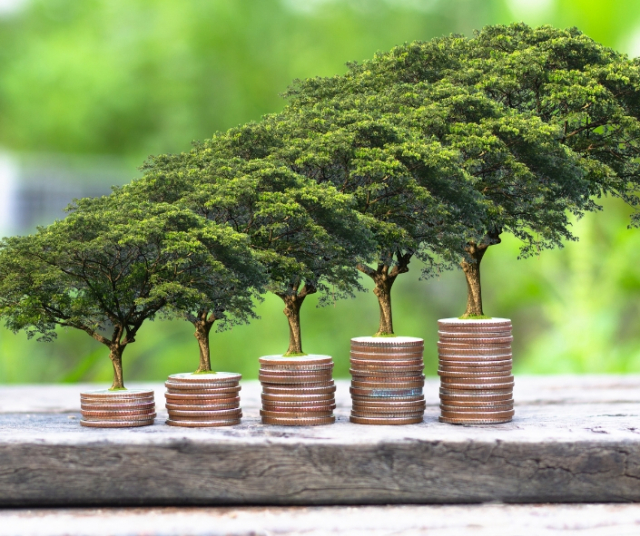Ecuador, a country located in the northwest region of South America, has experienced notable economic evolution throughout its history. Since its independence until today, Ecuador has faced a series of challenges and has made important progress in various aspects of its economy. Join us to explore the economic evolution of Ecuador, analyzing its economic challenges, notable achievements and future prospects for the country's economic development.
Historical and economic context.
To understand the economic evolution of Ecuador, it is essential to take into account its historical and economic context. After gaining independence from Spain in 1830, Ecuador faced numerous challenges, including political instability, internal conflicts, and a predominantly agrarian economy. Throughout the 20th century, the country experienced economic and social fluctuations, including times of economic growth and periods of financial crisis and recession.
Stages of economic development.
Agrarian stage (19th and early 20th centuries).
During this stage, Ecuador relied heavily on agriculture, with crops such as cocoa, coffee, and bananas as its main export products. The economy was dominated by large estates and a rural population mostly dedicated to agricultural activities.
Industrialization and urbanization (mid-20th century).
In the second half of the 20th century, Ecuador experienced a process of industrialization and urbanization, with significant growth in the manufacturing sector and an increase in migration to cities. Textile, food and construction industries were established, and economic diversification was encouraged.
Economic crisis and Neoliberal reforms (1980s and 1990s).
In the 1980s and 1990s, Ecuador faced a series of economic and financial crises, marked by high levels of inflation, external debt, and recession. In response to these crises, neoliberal policies were implemented that included privatization, trade liberalization, and cuts in public spending.
Economic stabilization and dollarization (late 20th century and early 21st century).
In the late 20th and early 21st centuries, Ecuador adopted the US dollar as its official currency in an effort to stabilize its economy and control inflation. Dollarization helped restore confidence in the economy and attract foreign investment, but it also posed challenges in terms of competitiveness and monetary policy.
Economic growth and social development (21st century).
In the 21st century, Ecuador experienced a period of moderate economic growth, driven by rising oil prices and investments in infrastructure and key sectors such as tourism and renewable energy. Social policies aimed at reducing poverty and improving social inclusion were implemented, such as the conditional monetary transfer program known as the "Human Development Bonus."
Current economic challenges.
Oil dependence.
Ecuador remains highly dependent on oil revenues, exposing it to the volatility of oil prices in international markets and the risks associated with the exploitation of natural resources.
Income inequality.
Income inequality remains a persistent problem in Ecuador, with a significant gap between rich and poor, as well as regional disparities in terms of economic development and access to opportunities.
Economic diversification.
Despite efforts to diversify the economy, Ecuador still faces challenges in terms of promoting non-traditional sectors, such as technology, innovation and manufacturing, that could generate employment and sustainable economic growth.
External debt.
External debt remains a concern for Ecuador, with high levels of debt potentially limiting its ability to invest in infrastructure, education and social programs.
Achievements and progress.

Poverty reduction.
In recent decades, Ecuador has managed to significantly reduce poverty levels and improve access to basic services such as education and health.
Investment in infrastructure.
The country has made significant investments in infrastructure, including transportation, energy and telecommunications projects, which have contributed to economic and social development.
Tourism promotion.
Ecuador has actively promoted tourism as a source of income and employment, highlighting its rich biodiversity, cultural heritage and natural attractions such as the Galapagos Islands and the Amazon rainforest.
Regional and international cooperation.
Ecuador has sought to strengthen regional and international cooperation in areas such as trade, investment and economic integration, seeking to take advantage of opportunities for collaboration and joint development with other countries and international organizations.
Future perspectives.
Economic diversification.
The country must continue working on the diversification of its economy, promoting non-traditional sectors such as tourism, technology and agribusiness to reduce its dependence on oil and generate employment and sustainable economic growth.
Investment in education and training.
Investment in education and training is essential to improve the productivity and competitiveness of the Ecuadorian workforce, preparing workers for the challenges and opportunities of the globalized labor market.
Environmental Protection.
Ecuador must prioritize the protection of the environment and the sustainable management of its natural resources, recognizing the importance of biodiversity and the country's natural heritage for the economic development and well-being of future generations.
Strengthening institutions and the rule of law.
Strengthening institutions and the rule of law is essential to guarantee a favorable business environment, promote transparency and accountability, and attract national and international investment for the economic and social development of the country.
Ecuador's economic evolution reflects a history of challenges, achievements and future perspectives. Although the country has faced numerous obstacles on its path to economic development, it has made significant progress in terms of poverty reduction, investment in infrastructure and promotion of tourism. However, to reach its full economic potential, Ecuador must continue working on diversifying its economy, protecting the environment, and strengthening its institutions and the rule of law. With a long-term vision and a continued commitment to sustainable development, Ecuador has the potential to become a prosperous and equitable economy that benefits all its citizens.
